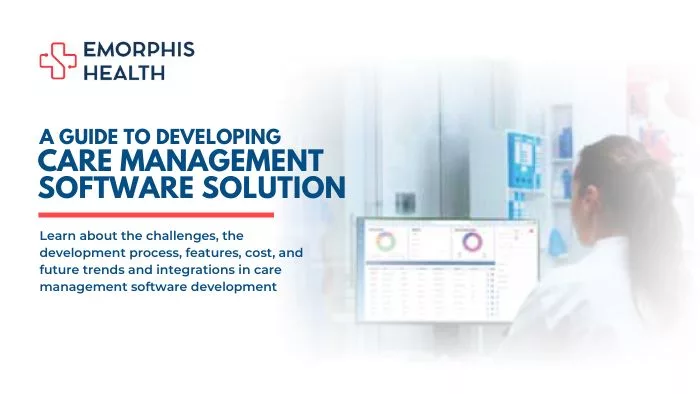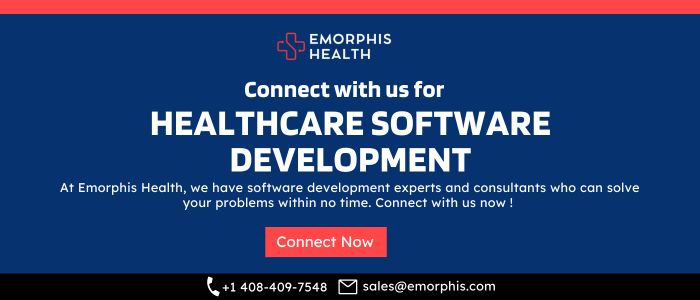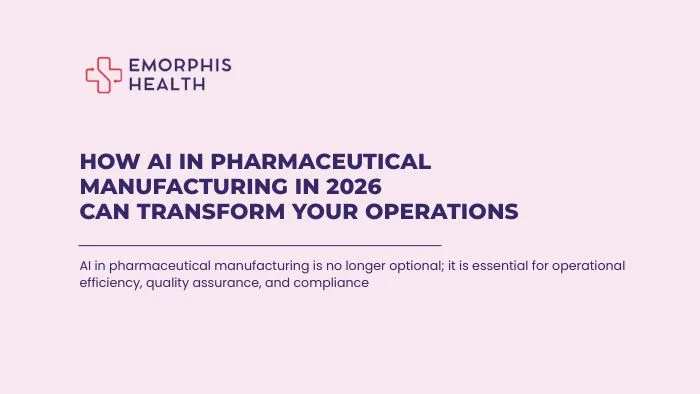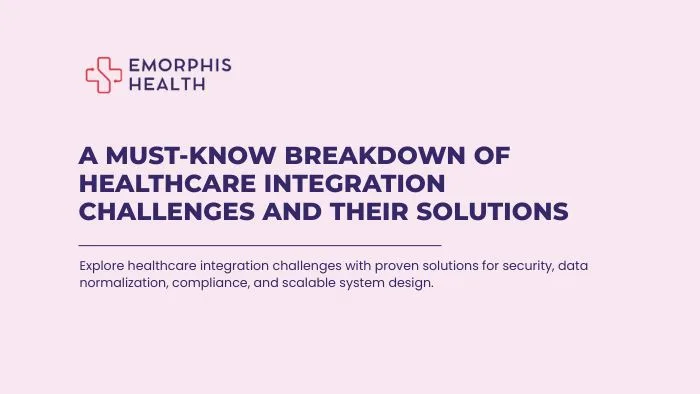Overview
See Contents
- 1 Overview
- 2 The Challenges
- 3 Developing Care Management Software Solutions
- 4 Features of Care Management Software Solutions
- 5 Cost of Care Management Software Development
- 6 How can Custom Care Management Solutions Help Care Managers and Agencies?
- 7 Custom Care Management Solutions vs Subscription-Based Care Management Solutions
- 8 Future Trends and Technology Integrations With Care Management Software Development
- 9 Conclusion
The global care management solutions market has witnessed remarkable growth in recent years, underscoring the increasing demand for innovative healthcare solutions. According to a Grand View Research report, the market size reached USD 11.5 billion in 2022, reflecting a burgeoning industry. Projections indicate a promising trajectory, with expectations of a compound annual growth rate (CAGR) of 14.41% from 2023 to 2030, signifying sustained expansion and opportunities for market players.
Building upon this momentum, recent findings from FactMR report, further illuminate the market’s potential. The global care management solutions market is estimated to have reached US$ 19.54 billion in 2024, marking significant growth within a short timeframe. Projections suggest rapid expansion, with a projected CAGR of 17.7%, aiming to achieve an impressive milestone of US$ 99.85 billion by 2034. These statistics underscore the industry’s dynamic nature and the increasing adoption of care management software worldwide. As demand for comprehensive healthcare solutions continues to surge, developers are poised to play a pivotal role in shaping the future of healthcare delivery through innovative software solutions.
By investing in care management software development, you can reap several benefits. Firstly, it helps streamline care coordination, allowing healthcare providers to collaborate more efficiently and ensuring smooth communication among the care team. Secondly, it enhances patient engagement by providing tools for education, appointment scheduling, secure messaging, and remote monitoring. Additionally, care management software facilitates data management and analytics, enabling healthcare organizations to gain insights, track performance, and make data-driven decisions.
To learn more about the challenges, development process, features, cost, and future trends and integrations in care management software development, here is the comprehensive guide, which provides detailed information on these aspects.
The Challenges
1. Fragmented Healthcare Systems
Healthcare systems often consist of multiple providers, hospitals, clinics, and other care settings that operate independently. This fragmentation can lead to disjointed communication, lack of coordination, and difficulty in sharing patient information effectively.
2. Lack of Interoperability
Healthcare IT systems, including electronic health records (EHRs), often use different formats and standards, making it challenging to exchange and integrate patient data seamlessly. This lack of interoperability hinders care coordination and limits the ability to access comprehensive patient information.
3. Communication Gaps
Inadequate communication among healthcare providers, care teams, and patients can lead to misunderstandings, delays in care, and potential medical errors. Efficient and timely communication is crucial for effective care coordination and patient engagement.
4. Complex Care Plans
Patients with chronic illnesses or complex medical conditions often require multiple healthcare providers and a comprehensive care plan. Coordinating care across different specialties, ensuring adherence to treatment plans, and managing care transitions can be challenging.
5. Limited Patient Engagement
Engaging patients actively in their care is essential for improving outcomes and preventing complications. However, factors such as patient education, health literacy, access to healthcare resources, and patient-provider communication barriers can limit patient engagement.
6. Data Privacy and Security
Protecting patient privacy and maintaining data security are critical concerns in healthcare. Adhering to privacy regulations and implementing robust security measures can be complex and resource-intensive, especially in an era of increasing cyber threats.
7. Socioeconomic Factors
Socioeconomic factors, such as limited access to healthcare services, financial constraints, cultural beliefs, and social determinants of health, can affect care coordination and patient engagement. Overcoming these barriers requires addressing social and economic disparities.
8. Technology Integration
Integrating various technologies, such as remote patient monitoring, telehealth, and wearable devices, into existing care management systems can present technical challenges. Ensuring seamless integration and data exchange between these technologies and healthcare providers’ systems is crucial for effective care coordination.
9. Care Transitions
Transitions between care settings, such as hospital to home or primary care to specialty care, can be complex. Lack of effective care transitions can result in gaps in care, medication errors, and patient confusion.
10. Regulatory and Compliance Requirements
Healthcare regulations, such as HIPAA and GDPR, impose strict requirements for data privacy, security, and patient rights. Complying with these regulations while delivering coordinated care and engaging patients adds complexity to care management solutions.
Addressing these challenges requires innovative care management solutions that leverage technology, improve communication, promote interoperability, empower patients, and prioritize coordinated care across the healthcare ecosystem.
Developing Care Management Software Solutions

In the healthcare industry, care management software solutions play a vital role in coordinating patient care, improving outcomes, and reducing costs. These solutions utilize technology to streamline processes, enhance communication, and provide valuable insights for effective care coordination. This comprehensive guide aims to provide a simplified overview of the key steps involved in developing a care management software solution.
A. Define Goals and Objectives
Before starting the development process, it is essential to define the goals and objectives of the care management software solution. Understand the specific needs of healthcare providers, payers, or patients. Determine the core functionalities, such as care coordination, patient engagement, data analytics, and reporting, based on these identified goals.
B. Assess Existing Workflows
Carefully evaluate the existing care management workflows within the organization or healthcare system. Identify any challenges or areas for improvement. This evaluation will help design a solution that aligns with current processes while addressing identified issues.
C. Develop the User Interface (UI) and User Experience (UX)
Create a user-friendly and easy-to-use interface that caters to healthcare professionals, administrators, and patients. Focus on simplicity, clarity, and accessibility to ensure a smooth experience across different devices and platforms.
D. Develop Core Functionalities
Based on the defined goals and objectives, develop the core functionalities of the care management software solution. Some important features include:
i. Care Coordination
Enable seamless collaboration and communication among healthcare providers, including task assignment, status tracking, and notifications.
ii. Patient Engagement
Implement tools for patient education, appointment scheduling, medication reminders, secure messaging, and telehealth capabilities.
iii. Data Management and Analytics
Create a strong infrastructure for capturing, storing, and analyzing patient data. Implement data security measures to comply with privacy regulations.
iv. Reporting and Insights
Develop customizable reporting dashboards and analytics tools to generate useful insights and measure performance indicators.
v. Integration
Integrate the solution with existing electronic health record (EHR) systems, third-party applications, and relevant data sources to ensure smooth data exchange and workflow optimization.
E. Implement Compliance and Security Measures
Ensure that the care management software solution complies with relevant healthcare regulations, such as data protection laws and privacy regulations. Incorporate necessary security measures like encrypting data, implementing access controls, and conducting regular security audits.
F. Test and Quality Assurance
Conduct thorough testing to identify and fix any functional or usability issues. Involve representative end-users in user acceptance testing (UAT) to gather feedback and make necessary improvements. Implement a rigorous quality assurance process to ensure the reliability, performance, and scalability of the software solution.
G. Deployment and Training
Once the solution is thoroughly tested and validated, deploy it in a live environment. Provide comprehensive training and support to end-users, including healthcare professionals, administrators, and patients. This ensures the successful adoption and efficient utilization of the care management software solution.
H. Continuous Improvement and Maintenance
Regularly monitor the performance of the software solution, gather user feedback, and identify areas for improvement. Continuously update and enhance the solution based on emerging technologies, changing regulations, and evolving user needs. Provide ongoing maintenance and technical support to address any issues and ensure uninterrupted functionality.
Features of Care Management Software Solutions

Care management software solutions typically offer a range of features designed to facilitate care coordination, patient engagement, data management, and analytics. Here are some key features commonly found in care management software solutions:
a. Care Coordination Tools
Enable seamless collaboration and communication among healthcare providers and care teams. This may include task assignment, status tracking, messaging, and care plan management.
b. Patient Engagement Features
Empower patients to actively participate in their care. These features may include patient education resources, appointment scheduling, medication reminders, secure messaging with healthcare providers, and access to personal health records.
c. Data Management and EHR Integration
Provide a centralized platform for capturing, storing, and managing patient data. Integration with electronic health record (EHR) systems allows for easy access to patient information, streamlining workflows and reducing data duplication.
d. Reporting and Analytics
Generate customized reports and analytics dashboards to gain insights into care outcomes, population health trends, and performance metrics. This helps identify areas for improvement and supports evidence-based decision-making.
e. Remote Patient Monitoring Integration
Enable the integration of remote patient monitoring devices and sensors, allowing healthcare providers to monitor patients’ vital signs, health metrics, and adherence to care plans remotely.
f. Task Automation and Workflow Optimization
Automate repetitive tasks and streamline care management workflows, reducing administrative burden and improving efficiency.
g. Care Plan Management
Support the creation, implementation, and management of personalized care plans for patients. This may include care plan templates, goal setting, progress tracking, and care plan revision capabilities.
h. Secure Messaging and Telehealth
Facilitate secure communication between healthcare providers and patients through secure messaging or telehealth capabilities, allowing for virtual consultations and remote care delivery.
i. Decision Support and Alerts
Provide clinical decision support tools, such as evidence-based guidelines and alerts for potential medication interactions or care gaps, to assist healthcare providers in making informed decisions.
j. Compliance and Security Features
Ensure compliance with healthcare regulations, such as HIPAA, by implementing robust data security measures, access controls, and audit trails to protect patient privacy and ensure data confidentiality.
k. Care Transitions Support
Assist in managing care transitions between different healthcare settings by providing tools for care coordination, discharge planning, and communication with post-acute care providers.
l. Integration with External Systems
Enable integration with external systems and data sources, such as pharmacies, laboratories, and health information exchanges, to facilitate seamless data exchange and interoperability.
It’s important to note that the specific features may vary based on the target users (e.g., healthcare providers, payers, patients) and the customization options offered by the care management software solution.
Cost of Care Management Software Development

The cost of care management software development can vary depending on several factors. Firstly, the complexity and scope of the software solution play a significant role in determining the cost. A more comprehensive and sophisticated care management software solution with advanced features, such as care coordination tools, patient engagement functionalities, data management and analytics capabilities, and integration with external systems, may require more resources and development time, thus increasing the cost.
Additionally, the chosen development approach can impact the cost of care management software development. Building the software from scratch allows for more customization and tailored functionalities but may involve higher costs due to the need for extensive coding and development efforts. On the other hand, customizing an existing care management platform or using pre-built modules can reduce development time and costs, but may have limitations in terms of customization options and flexibility.
The level of expertise and experience of the development team is another factor that influences the cost. Hiring highly skilled developers or engaging a reputable healthcare software development company with a track record of developing care management solutions is an investment in expertise solutions. This can ensure the delivery of a high-quality software solution that meets the specific requirements and delivers value to healthcare organizations.
It is also important to consider the ongoing costs associated with care management software development. This includes expenses related to maintenance, updates, and technical support. Regular updates and maintenance are necessary to ensure the software’s functionality, security, and compliance with changing regulations. Technical support services, including troubleshooting and bug fixes, may also incur additional costs.
ROI with Custom Care Management Solution Development
Developing a custom care management solution can lead to a good return on investment (ROI). When healthcare organizations invest in a tailored care management solution, they can achieve better outcomes and cost savings. The custom solution can be designed to meet the specific needs and workflows of the organization, improving efficiency and reducing unnecessary expenses. By streamlining administrative tasks, automating processes, and enhancing care coordination, the organization can provide higher-quality care while optimizing resource utilization. This ultimately results in improved patient outcomes and cost reductions, making the ROI favorable for the organization.
Connect with us for more details on care management software development
To get an accurate cost estimate for care management software development, it is crucial to discuss the project requirements, desired functionalities, and customization needs with software development providers. They can provide detailed pricing information based on the specific project scope, technologies involved, and estimated development efforts. Careful consideration of these factors will help healthcare organizations plan their budget and make informed decisions during the software development process.
How can Custom Care Management Solutions Help Care Managers and Agencies?
A custom care management solution can significantly benefit care managers and agencies in several ways. Here are some key ways in which such a solution can help:
1. Streamlined Workflow
A custom care management solution can automate and streamline various administrative tasks, such as scheduling appointments, managing client information, and tracking care plans. This enables care managers to save time and focus more on providing quality care to their clients.
2. Efficient Care Coordination
Care managers often work with a multidisciplinary team of healthcare professionals. A custom care management solution can facilitate effective communication and collaboration among team members, allowing them to share vital information, updates, and care plans in real-time. This enhances care coordination, leading to better outcomes for clients.
3. Comprehensive Client Profiles
A custom solution can provide care managers with a centralized database of client information, including medical history, diagnoses, medications, allergies, and preferences. Having quick access to this data empowers care managers to make informed decisions and provide personalized care to clients.
4. Care Plan Management
Custom care management solutions can include features for creating, updating, and managing care plans. Care managers can easily develop individualized care plans based on client needs, track progress, and make adjustments as necessary. This ensures that care plans are tailored to each client and can be adapted over time.
5. Documentation and Reporting
Care managers often need to maintain accurate documentation and generate reports for regulatory compliance, billing purposes, and quality assurance. A custom care management solution can automate these processes, making it easier to record and retrieve data, generate reports, and maintain document integrity.
6. Integration with Existing Systems
A custom solution can be designed to integrate seamlessly with existing systems used by care managers and agencies, such as electronic health records (EHR) or billing systems. This integration reduces duplicate data entry, enhances data accuracy, and improves overall workflow efficiency.
7. Data Analytics and Insights
By leveraging the data captured within the care management solution, care managers and agencies can gain valuable insights into client trends, outcomes, resource allocation, and performance metrics. This data-driven approach allows for evidence-based decision-making, proactive interventions, and continuous improvement.
A custom care management solution can empower care managers and agencies by providing them with a robust platform to streamline operations, enhance care coordination, improve client outcomes, and optimize resource utilization.
Let us check some differences now.
Custom Care Management Solutions vs Subscription-Based Care Management Solutions
| Custom Care Management Solutions | Subscription-Based Care Management Solutions | |
| Customized to Needs | Designed and developed to meet specific agency requirements | Pre-built solution with standard features |
| Scalability and Flexibility | Easily scalable and can be adapted to agency growth | Limited scalability, dependent on vendor updates |
| Competitive Advantage | Offers unique features and capabilities that differentiate the agency | Standard features shared among multiple users |
| Ownership and Control | You own the software and have control over customization, updates, and compliance | Software is owned and controlled by the vendor |
| Updates and Maintenance | Updates and maintenance can be scheduled as per the use | The vendor provides updates and maintenance services as per their schedule |
| Industry Best Practices | Customizable to align with the agency’s best practices | Industry-standard practices and guidelines implemented as per vendor schedule |
Future Trends and Technology Integrations With Care Management Software Development

In the future, there will be exciting advancements in developing care management software solutions. These solutions aim to improve the coordination of care and engage patients in their healthcare. Various technologies will be integrated to enhance these software solutions.
One important area of development is the integration of remote patient monitoring apps with care management software. This integration allows healthcare providers to monitor patients’ health remotely and intervene early if needed. By using these apps, healthcare professionals can gather real-time data on patients’ health and track their progress.
Another key aspect is the integration of artificial intelligence (AI) and machine learning algorithms into care management software. This integration enables the analysis of large amounts of patient data and helps healthcare providers make informed decisions. By using AI algorithms, care management software can identify patterns, predict disease progression, and provide personalized care recommendations based on individual patient profiles.
Integrations with care management software can help scale the solution
The integration of telehealth capabilities is also a significant development. By incorporating telehealth into care management software, healthcare providers can offer remote consultations and virtual visits. This integration improves access to healthcare services, allows for convenient communication between patients and healthcare professionals, and enhances overall care coordination.
Wearable devices are another important integration in care management software development. By integrating wearable devices with the software, healthcare providers can access valuable health data, such as activity levels and heart rates. This integration helps in making informed care decisions and empowers patients to actively manage their own health.
These technology integrations, including remote patient monitoring apps, AI and machine learning, telehealth capabilities, and wearable devices, contribute to the development of comprehensive care management software solutions. The aim is to create integrated care management software that improves coordination, engages patients, and provides personalized care. These solutions can be customized according to specific needs and requirements, resulting in custom care management software, solutions, and apps. With ongoing developments and advancements, care management software will continue to evolve, improving patient care and overall healthcare outcomes.
Find details on AI software development
Conclusion
Developing custom care management software solutions requires a systematic approach to address the complex challenges of healthcare coordination and patient engagement. By defining clear objectives, designing user-friendly interfaces, implementing robust functionalities, ensuring compliance and security, and providing continuous support, organizations can create effective care management software solutions. These solutions improve patient outcomes, streamline workflows, and enhance overall healthcare delivery. Connect with Emorphis Health, a healthcare software product engineering company for custom care management software development.

